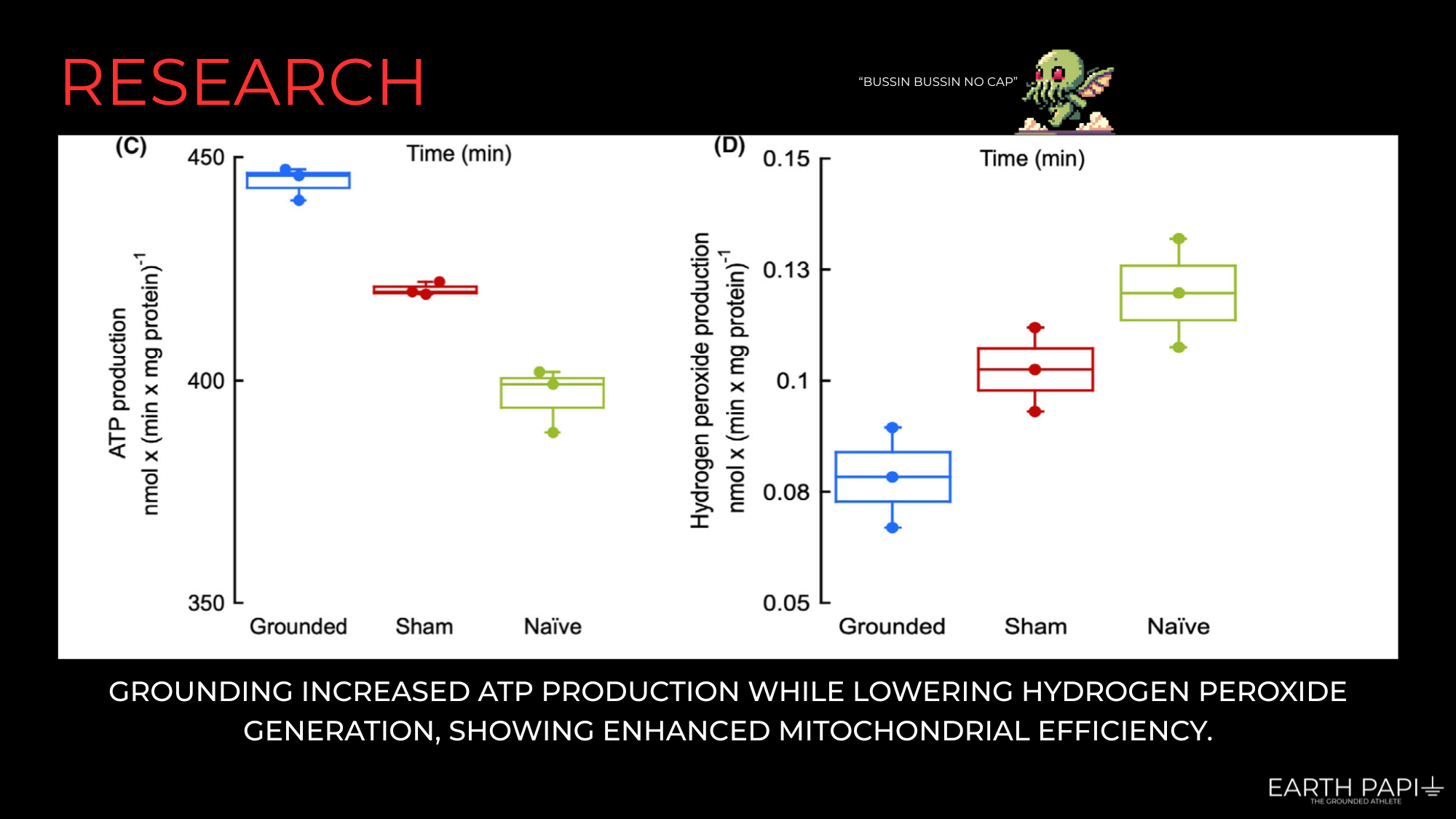Zooming In - Grounding's Effect on Bioenergetics and Mitochondrial Efficiency
I’ll be going over a cool paper for you guys today. In 2025, researchers at UC Davis uncovered a very cool effect on mitochondrial performance that could redefine what it means to be grounded. Although, the results have been hinted at many times in past articles and in the Earth & Water Books. Can’t say I’m surprised!
Oxidative stress arises when the generation of reactive oxygen species (ROS) exceeds the body’s capacity to neutralize them through available electrons. This imbalance oxidizes proteins, lipids, and nucleic acids, derailing redox-dependent signaling and initiating chronic inflammation. Mitochondria sit at the center of this process: they are the cell’s primary sites of both ATP synthesis and ROS formation. During oxidative phosphorylation, electrons pass through complexes I–IV of the electron transport chain (ETC). A small fraction leak prematurely to oxygen, forming superoxide (O₂•⁻). The rate of this leak scales exponentially with the inner-membrane potential (ΔΨₘ).
Electrical grounding appears to alter this relationship. Recent work from the University of California, Davis (FEBS Open Bio, 2025) demonstrated that mitochondria maintained at ground potential produced 5–11 % more ATP and 22–33 % less ROS than ungrounded controls. Grounded mitochondria also showed a ≈ 5 % lower ΔΨₘ, a change consistent with reduced electron leak from complexes I and III. In effect, grounding slightly relaxes the electrochemical gradient, decreasing the probability of single-electron reduction of oxygen while maintaining overall flux through the ETC.
From an electrical standpoint, grounding establishes equipotential between the body and the Earth’s surface (≈ 0 V). This lowers tissue redox potential (Eₕ), permitting an influx of low-energy electrons into conductive pathways that include plasma, interstitial fluids, and the collagen-water matrix. These electrons function as mobile reductants, neutralizing oxidized biomolecules and stabilizing redox signaling domains. Grounding increases the availability of reducing equivalents that buffer the oxidative load imposed by mitochondrial respiration.
Viewed this way, grounding is not a mystical energy transfer but a straightforward electron-donation event that restores electrical homeostasis to an open biological system. The mitochondrial data indicate that even minor adjustments in local potential can yield measurable reductions in ROS output and improved coupling efficiency (ATP / O₂). As modern insulation has largely removed the body from its natural conductive reference, restoring that connection may re-engage one of nature’s oldest antioxidant systems - the steady electron reservoir of the Earth itself.
If you’re interested in learning more about this, check out the Earth & Water Books.
Read the study HERE.







